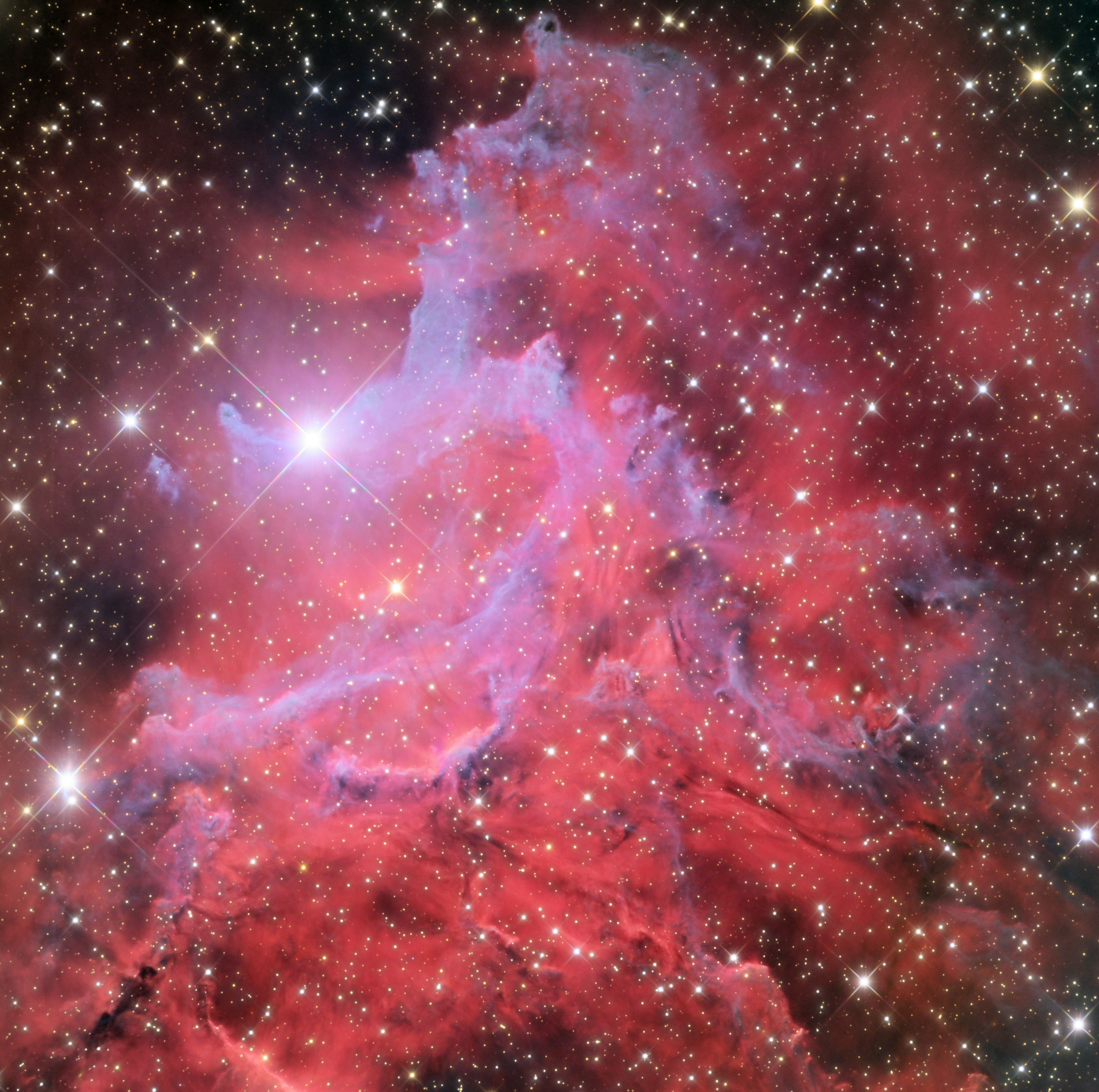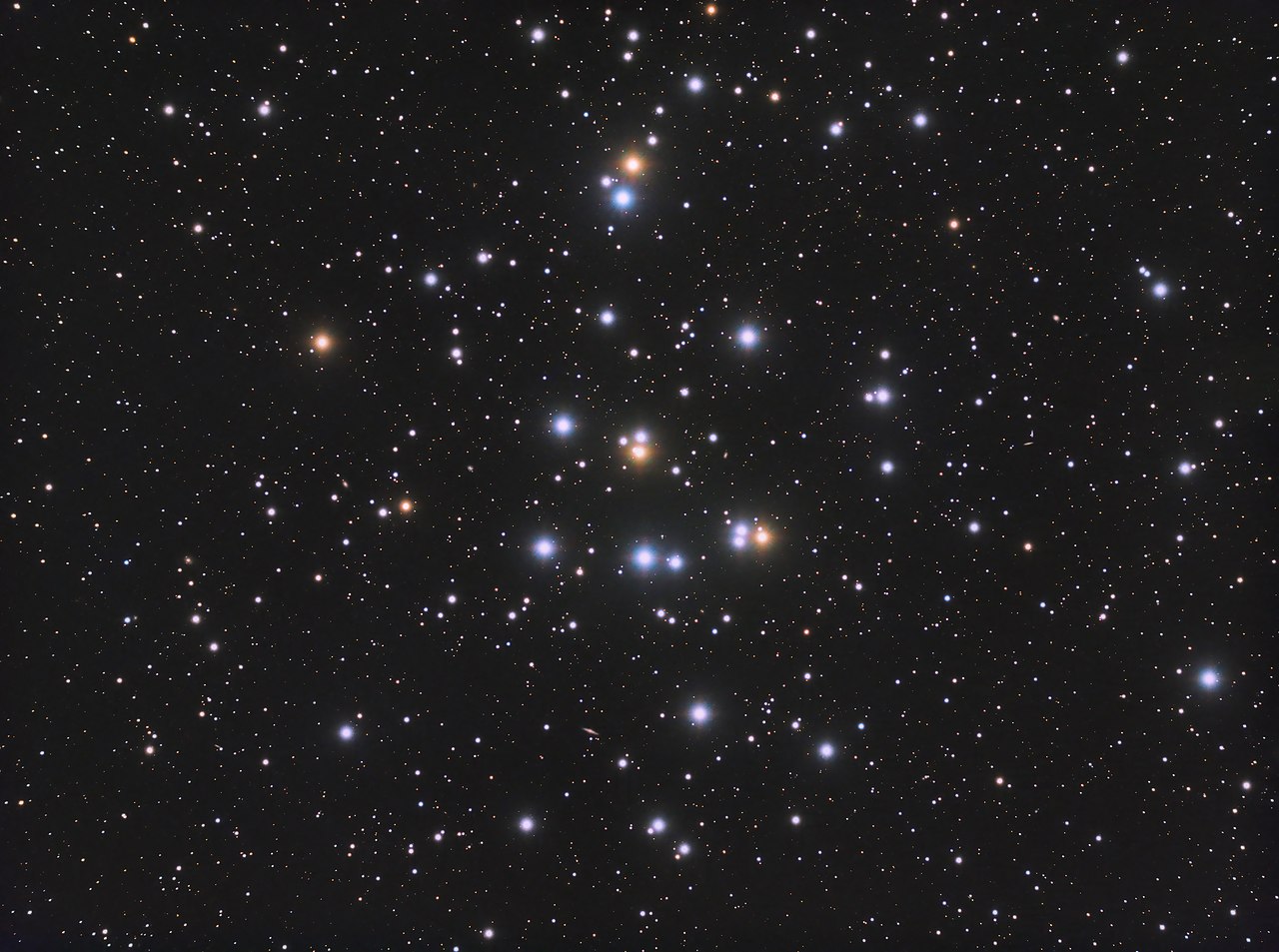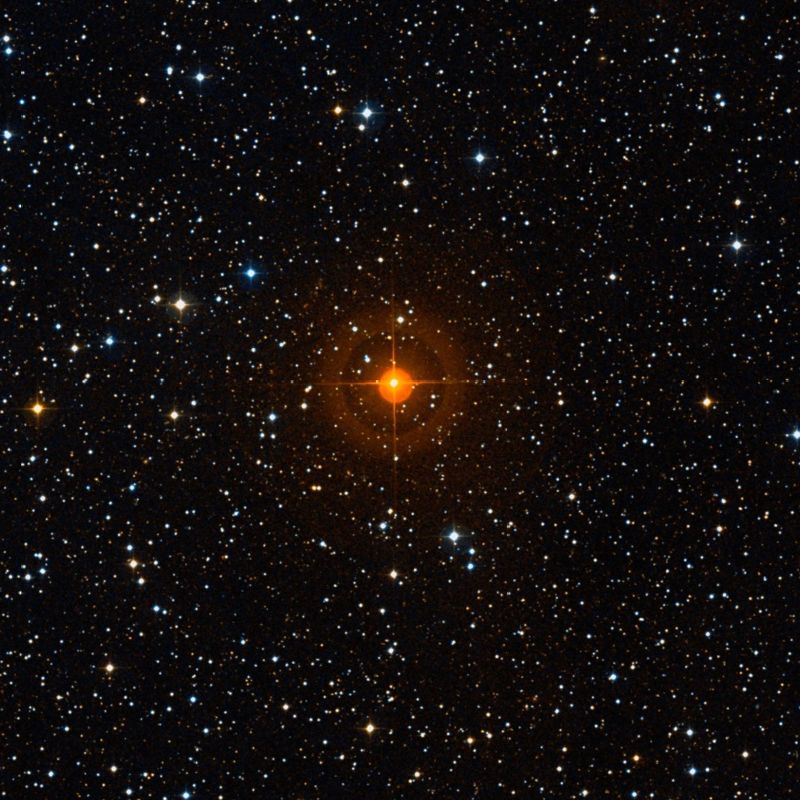AVAO wrote: ↑Sun May 01, 2022 5:13 am
I think the JWST will reveal that much more stars have tails of dust than we think.
And in many cases these will only be visible in the IR and with a high IR sensitivity of the instrument.
The question for me is what is the reason for this?
When stars start to develop strong "plumes of smoke", could this be due to "incomplete burning processes" at the end of their life?
I dont't know, if AE Aurigae is a good example for that...
 Runaway star AE Aurigae
Creator: Adam Block
Copyright by Creator(s), Mount Lemmon SkyCenter, and University of Arizona
https://skycenter.arizona.edu/astrophotography/ic0405
Runaway star AE Aurigae
Creator: Adam Block
Copyright by Creator(s), Mount Lemmon SkyCenter, and University of Arizona
https://skycenter.arizona.edu/astrophotography/ic0405
Stars sustain themselves by fusing lighter elements into heavier elements and extracting energy while doing so, thus holding themselves up against the forces of gravity (and preventing themselves from collapsing, as the energy they have extracted is flowing outward, thus counteracting gravity that tries to make the stars collapse).
When stars have reached advanced stages of fusion - i.e., when they have used up the hydrogen in their cores and started fusing heavier elements in shells around their cores - then a relatively few of them can turn into carbon stars that are indeed strikingly red from "soot".
Wikipedia wrote:
A carbon star (C-type star) is typically an asymptotic giant branch star, a luminous red giant, whose atmosphere contains more carbon than oxygen. The two elements combine in the upper layers of the star, forming carbon monoxide, which consumes all the oxygen in the atmosphere, leaving carbon atoms free to form other carbon compounds, giving the star a "sooty" atmosphere and a strikingly ruby red appearance.
AE Aurigae, on the other hand, is not a carbon star, and it is not "smoking". AE Aurigae is a hot main sequence star, fusing hydrogen to helium in its core.
AE Aurigae is a runaway star:
Sky & Telescope wrote:
Not only do Mu Col and AE Aur share the same 230,000 mph (100 km/sec) space velocity, they're racing away from one another in almost exactly opposite directions. Just as we trace meteor trails backwards to their radiant, we can trace the paths of Mu Col and AE Aur 2.5 million years back in time. They "meet" in the rich, star-forming regions highlighted by today's Orion Nebula. Today, they're 1,600 light-years apart. Back then, the nebula had only begun to emerge from darkness, awoken by the flickering light of its earliest suns...
It's thought that Mu Col and AE Aur once shared company as a binary system that collided or strayed too close to another binary pair. Complicated gravitational interactions ensued, breaking the binary's bond and flinging the stars into space as "runaways" while leaving the other binary intact, still lurking near the scene of the crime.
So AE Aur is racing through space at 100 km/sec. It has very recently blundered into cloud of gas and dust that just happened to lie in its path. And because AE Aur is so hot, 33,000 K, it ionizes the hydrogen in the cloud, making it glow red.
What are the bluish tendrils of the Flaming Star Nebula (which is the name of the nebula that AE Aur is lighting up)? Those tendrils are made of ordinary space dust.
The image above shows a cosmic dust particle. Cosmic dust particles are typically the right size to collectively reflect blue light at some 400 nm, making cosmic dust either look blue (as in the Pleiades nebulas), when the blue light is reflected our way, or either reddish or dark (as in the dust lane of the Milky Way) because the blue light is reflected away. Look at
this image by Michael Skrutskie to see how dust reddening works in space.
Anyway. Look at the dust particle again. As you can see, it is rather fluffy. In the vicinity of a torrent of ultraviolet photons and a strong stellar wind from stars as hot as AE Aur, such dust particles are typically "cooked" to a considerably smaller size, so that they can't reflect the blue light from hot stars. Why do we see these light-reflecting tendrils of fluffy dust particles around AE Aur?
Answer: The dust tendrils have survived because AE Aur is passing through this cloud so quickly. AE Aur has undoubtedly destroyed huge numbers of dust motes on its way through the cloud, but a sufficient number of dust particles survive to reflect AE Aur's blue light.
But why does the dust seem to concentrate right in front of AE Aur itself? It's probably because AE Aur is acting like a snowplow, sweeping up dust in front of it in its mad race through the cloud of gas and dust that AE Aur has turned into a nebula of its own making.
Ann
 M44: The Beehive Cluster
M44: The Beehive Cluster



